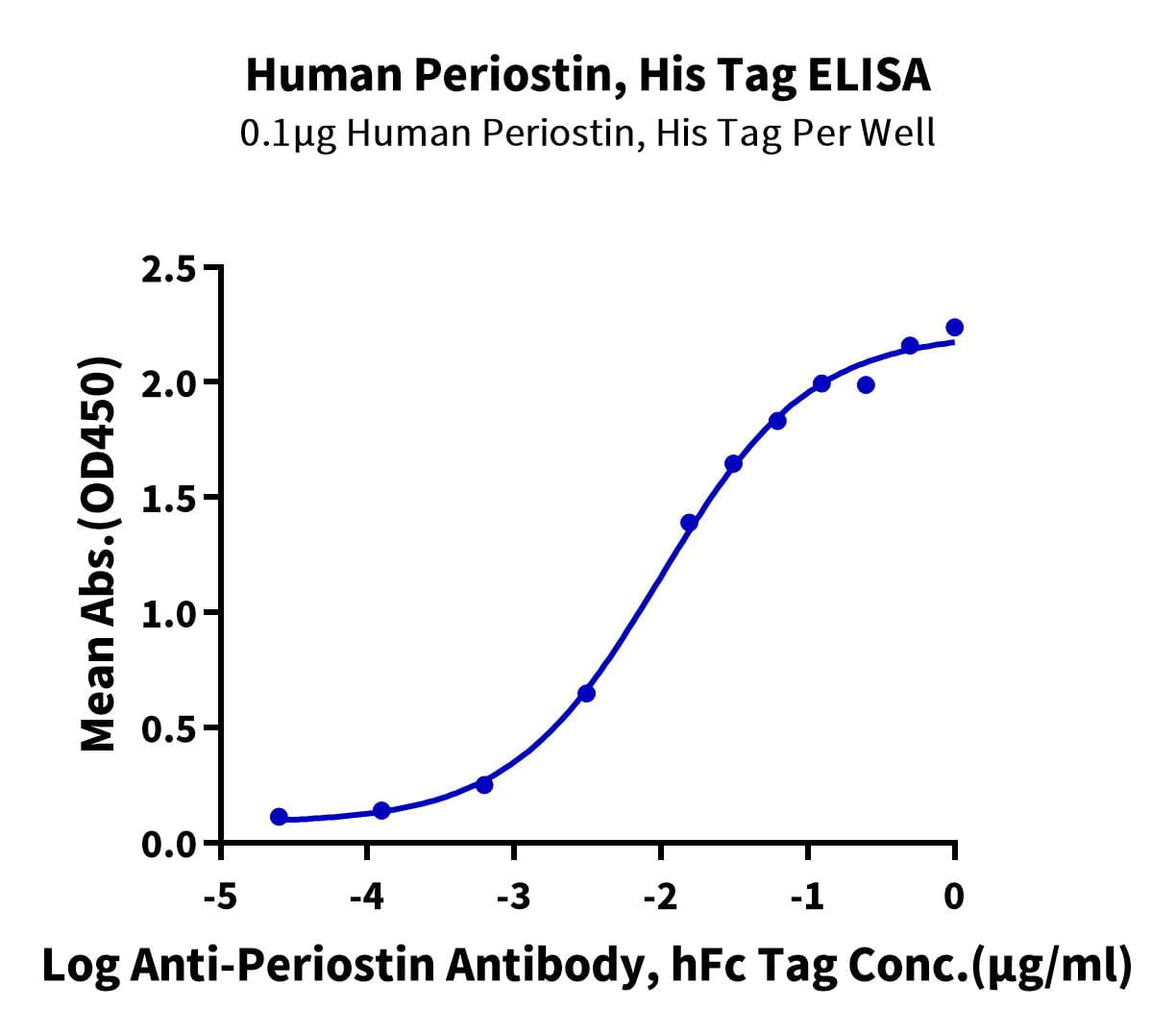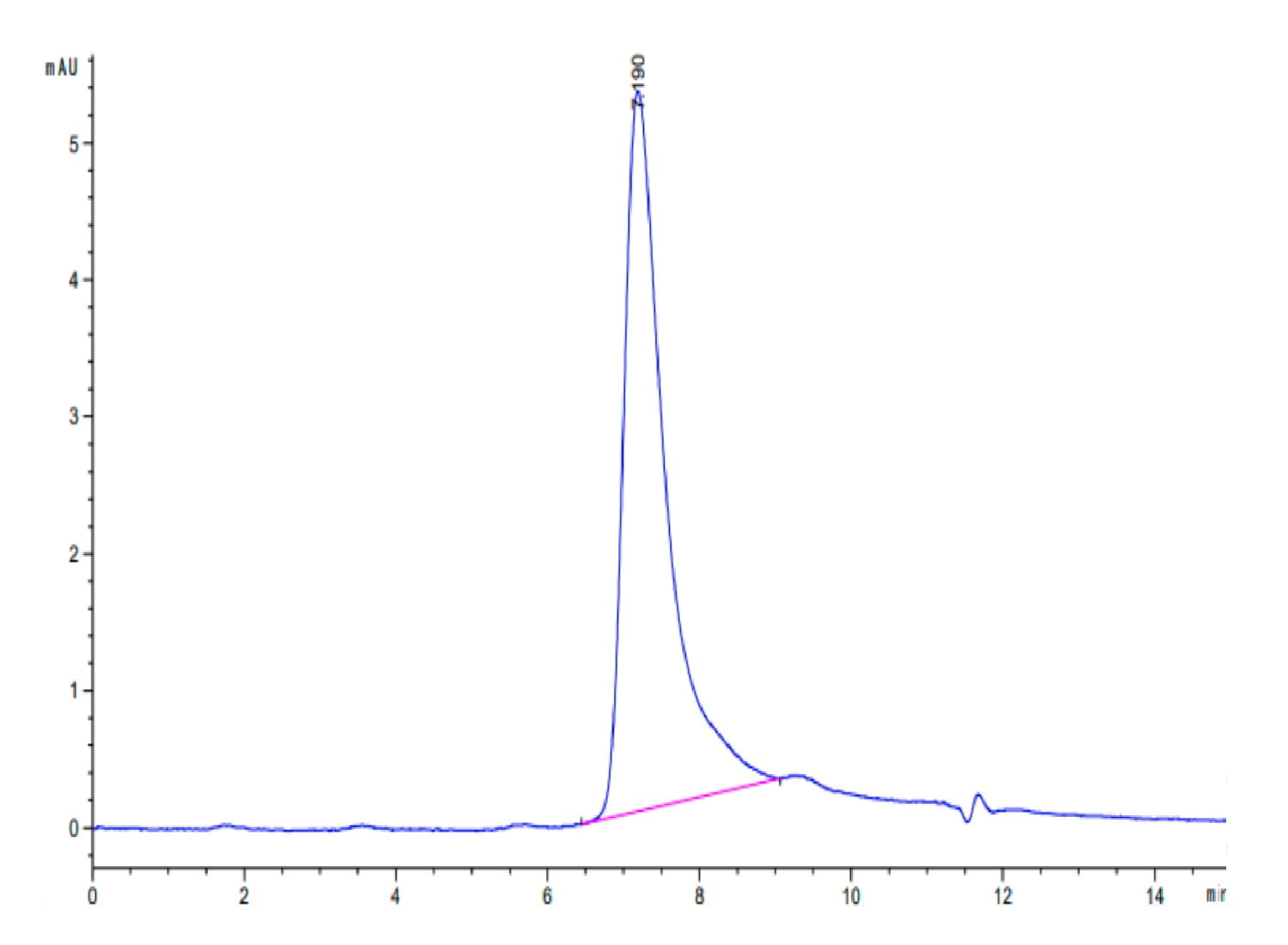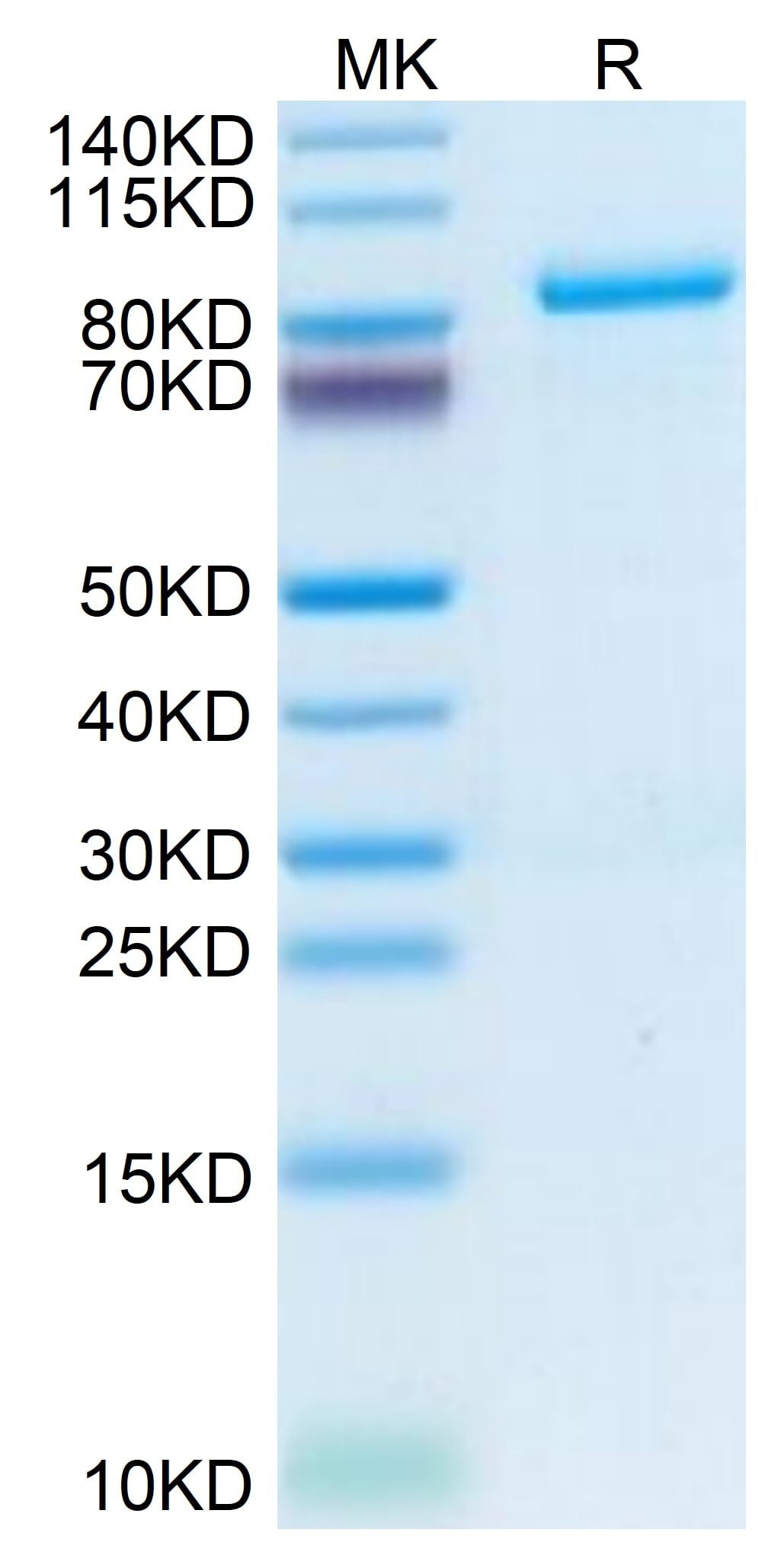| Weight | 1 lbs |
|---|---|
| Dimensions | 9 × 5 × 2 in |
| accession | Q15063 |
| express system | HEK293 |
| product tag | C-His |
| purity | > 95% as determined by Tris-Bis PAGE;> 95% as determined by HPLC |
| background | Periostin is a matricellular protein that is expressed in several tissues during embryonic development; however, its expression in adults is mostly restricted to collagen-rich connective tissues. Periostin is expressed only briefly during kidney development, but it is not normally detected in the adult kidney. Recent evidence has revealed that periostin is aberrantly expressed in several forms of chronic kidney disease (CKD), and that its expression correlates with the degree of interstitial fibrosis and the decline in renal function. |
| molecular weight | The protein has a predicted MW of 92.1 kDa. Due to glycosylation, the protein migrates to 93-100 kDa based on Tris-Bis PAGE result. |
| available size | 100 µg, 500 µg |
| endotoxin | Less than 1EU per μg by the LAL method. |
Human Periostin/OSF-2 Protein 3560
$330.00 – $1,100.00
Summary
- Expression: HEK293
- Functional: Yes (ELISA)
- Amino Acid Range: Asn22-Gln836
Human Periostin/OSF-2 Protein 3560
| protein |
|---|
| Size and concentration 100, 500µg and lyophilized |
| Form Lyophilized |
| Storage Instructions Valid for 12 months from date of receipt when stored at -80°C. Recommend to aliquot the protein into smaller quantities for optimal storage. Please minimize freeze-thaw cycles. |
| Storage buffer Shipped at ambient temperature. |
| Purity > 95% as determined by Tris-Bis PAGE |
| target relevance |
|---|
| Periostin is a matricellular protein that is expressed in several tissues during embryonic development; however, its expression in adults is mostly restricted to collagen-rich connective tissues. Periostin is expressed only briefly during kidney development, but it is not normally detected in the adult kidney. Recent evidence has revealed that periostin is aberrantly expressed in several forms of chronic kidney disease (CKD), and that its expression correlates with the degree of interstitial fibrosis and the decline in renal function. |
| Protein names Periostin (PN) (Osteoblast-specific factor 2) (OSF-2) |
| Gene names POSTN,POSTN OSF2 |
| Mass 9606Da |
| Function Induces cell attachment and spreading and plays a role in cell adhesion (PubMed:12235007). Enhances incorporation of BMP1 in the fibronectin matrix of connective tissues, and subsequent proteolytic activation of lysyl oxidase LOX (By similarity). |
| Subellular location Golgi apparatus. Secreted. Secreted, extracellular space, extracellular matrix. Note=Colocalizes with BMP1 in the Golgi. |
| Tissues Widely expressed with highest levels in aorta, stomach, lower gastrointestinal tract, placenta, uterus, thyroid tissue and breast. Expressed in the kidney (PubMed:21763681). Expressed in the lung (PubMed:22079858). Up-regulated in epithelial ovarian tumors. Not expressed in normal ovaries. Also highly expressed at the tumor periphery of lung carcinoma tissue but not within the tumor. Overexpressed in breast cancers. |
| Structure Homodimer (PubMed:29754429). Interacts with BMP1 and fibronectin. |
| Post-translational modification Gamma-carboxylation is controversial. Gamma-carboxyglutamated; gamma-carboxyglutamate residues are formed by vitamin K dependent carboxylation; this may be required for calcium binding (PubMed:18450759). According to a more recent report, does not contain vitamin K-dependent gamma-carboxyglutamate residues (PubMed:26273833). |
| Target Relevance information above includes information from UniProt accession: Q15063 |
| The UniProt Consortium |
Data
Publications
Publications
| pmid | title | authors | citation |
|---|---|---|---|
| We haven't added any publications to our database yet. | |||
Protocols
| relevant to this product |
|---|
Documents
| # | ||
|---|---|---|
| Please enter your product and batch number here to retrieve product datasheet, SDS, and QC information. | ||

















